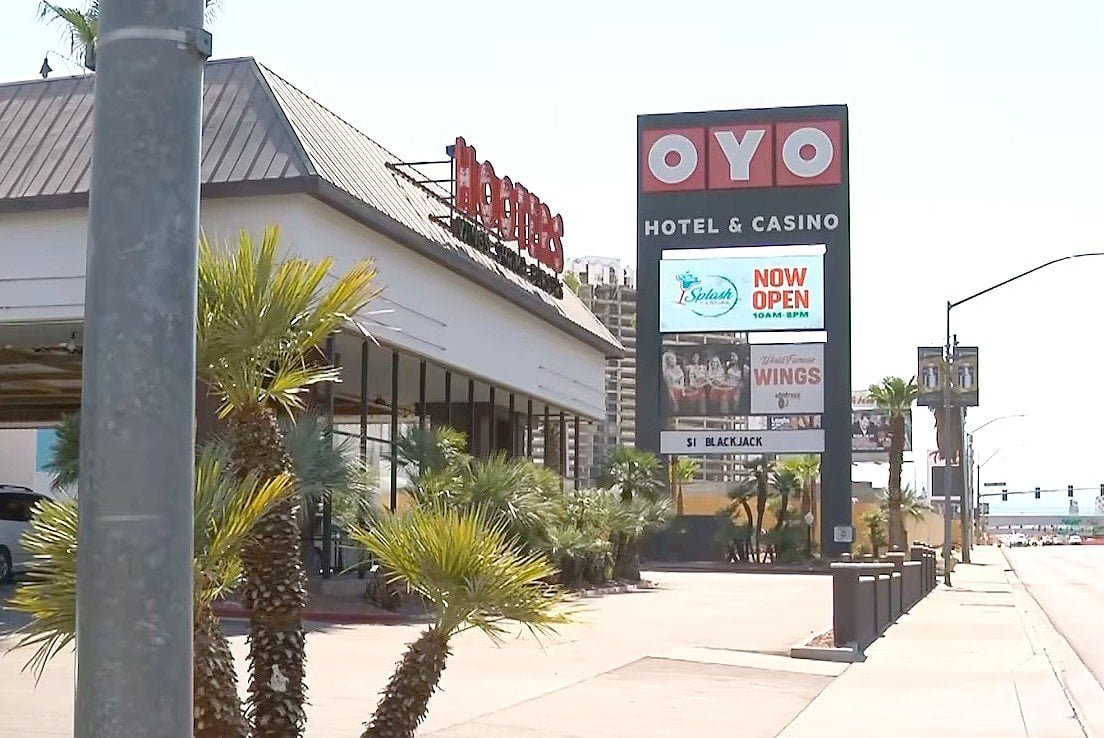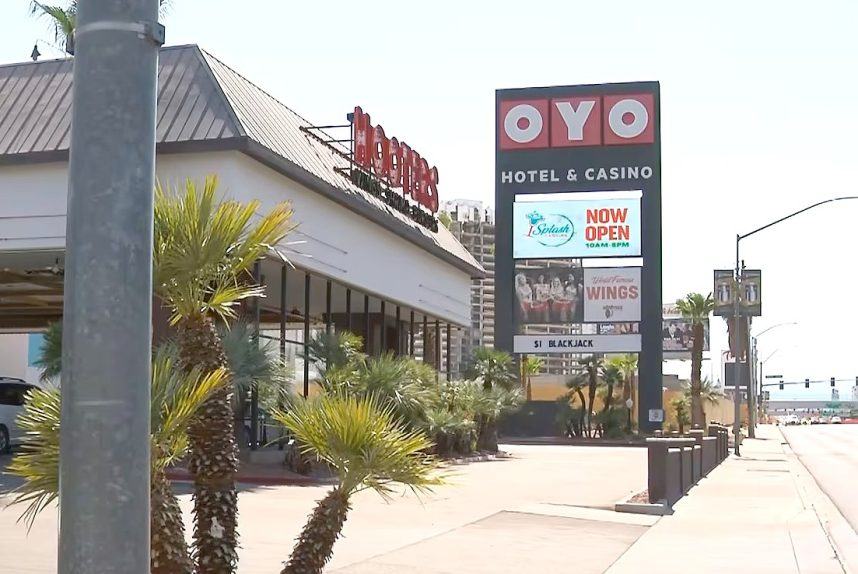
OYO VEY! OSHA Investigates Vegas Casino for A/C Outage in 120° Heat
Posted on: July 9, 2024, 07:01h.
Last updated on: July 9, 2024, 07:01h.
The Nevada branch of the Occupational Safety and Health Administration (OSHA) is investigating the OYO Las Vegas Hotel & Casino for inadequate air-conditioning. According to multiple local reports, the agency received complaints from employees about sweltering conditions inside the 30,000 square-foot casino.

KVVU-TV/Las Vegas reports being alerted to the unacceptable situation last week, by several viewer emails. So the news station paid a visit to the property, which is just east of the Tropicana demolition site off the Strip.
What they observed were several swamp coolers operating on the casino floor, no air streaming from the A/C vents, and small fans pointed at the flushed faces of front desk employees.
At the time of their visit last week, an OYO rep told KVVU that “the A/C is not operating in a small portion of the casino.”
Las Vegas has experienced record-shattering heat this week. The National Weather Service said the temperature at Harry Reid International Airport reached 120°F on Sunday, three degrees hotter than the hottest temperature ever recorded in Las Vegas.
No report mentioned a temperature measurement inside the OYO, which opened on the former site of the Hooters Hotel in 2019. While federal OSHA uses 80°F as the heat threshold to trigger consequences, Nevada OSHA considers 90°F more appropriate for the state’s dry climate.
However, Nevada OSHA has no enforceable heat illness standard.
One may be on the way, however. The agency is reportedly working with stakeholders to pass regulations allowing the agency to penalize businesses with workers exposed to temperatures above 90°F, and to force them to actively maintain a program for managing heat illness.




